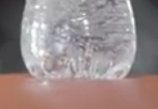| "Descrizione" by CarPas (5242 pt) | 2023-Feb-02 11:06 |
Review Consensus: 8 Rating: 8 Number of users: 1
| Evaluation | N. Experts | Evaluation | N. Experts |
|---|---|---|---|
| 1 | 6 | ||
| 2 | 7 | ||
| 3 | 8 | ||
| 4 | 9 | ||
| 5 | 10 |
Acrylic acid (propenoic acid) is a chemical compound, the simplest alpha, beta unsaturated monocarboxylic acid. It is also known as acrylate.
It appears as a colourless liquid with a strong, pungent odour. Soluble in ethanol, water, ether, acetone, benzene, chloroform. It polymerises easily in air and can be converted to propionic acid (2-chloropropionic acid) with appropriate hydrogenation. It is usually produced from petrochemical compounds such as propene oxidation and fossil oil. It can be obtained from lactic acid by gaseous catalytic dehydration or by catalytic oxidation of propylene and acrolein.

What it is used for and where
Acrylic acid is a very interesting and popular chemical compound and is the starting point for the construction of super-absorbent polymers used as raw material for plastics, adhesives, paints, resins usually in ester form. Its salts are used in water treatment, detergents and dispersants. Acrylate polymer products have a consistent resistance to environmental pollution caused by chemical compounds.
Cosmetics
Nail Conditioning agent. It is an agent that creates protection against harmful or chemical substances by strengthening the nail structure against external elements and can repair any chipping, cracking or brittle nails. It helps keep the nail's outer layer and keratin protein in good condition. It can also prevent cracking and peeling of the nail.
Safety
Irritating to skin, mucous membranes, eyes. It is non-carcinogenic.
The most relevant studies on this acid have been selected with a summary of the contents:
| Evaluate |

